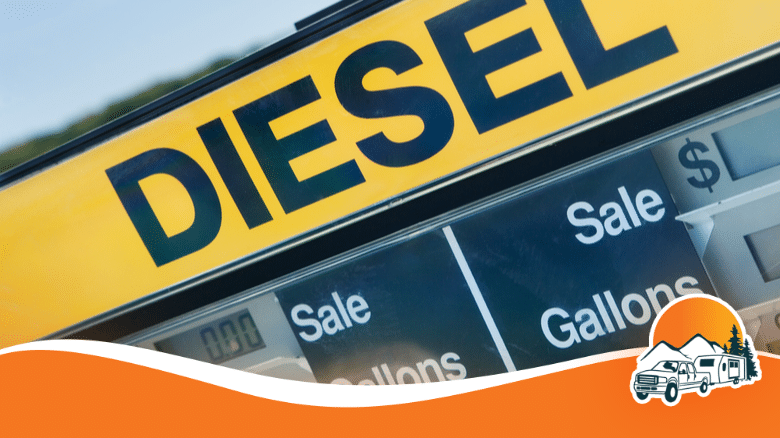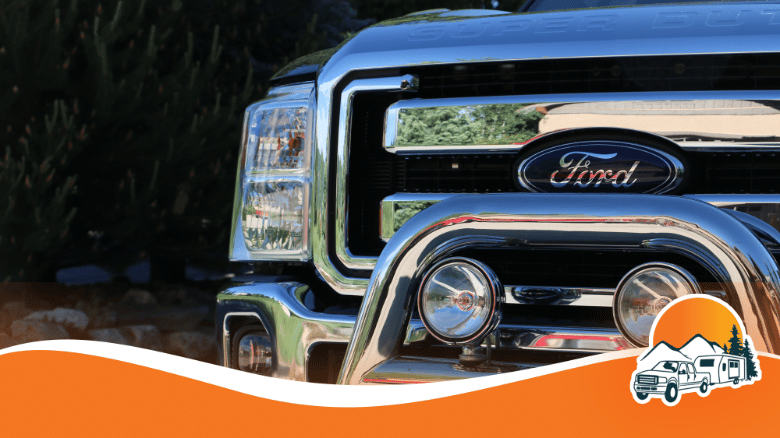A weight distribution hitch is an essential tool for anyone who frequently tows heavy loads using their vehicle. Towing can put significant strain on your vehicle’s suspension, steering, brakes, and tires. It can also make your vehicle harder to control, particularly in windy conditions or when other vehicles pass by.

A weight distribution hitch helps to distribute the load more evenly across your vehicle’s frame, making your towing experience more stable, comfortable, and safe.
Weight distribution hitches work by using spring bars and chains to apply leverage to both the tow vehicle and the trailer, allowing them to share the weight more evenly. This not only improves the handling and stability of your vehicle but also reduces the stress on the hitch system and your vehicle’s suspension. For anyone who regularly tows heavy loads, investing in the best weight distribution hitch is crucial for safety and efficiency.
When choosing a weight distribution hitch, it’s essential to consider factors such as the towing capacity of your vehicle, the tongue weight of your trailer, and the type of hitch system compatible with your specific setup. Additionally, you should look for features such as sway control, which helps to further improve stability, especially when driving on uneven roads or in difficult conditions. Easy installation and maintenance are also crucial factors for ensuring a hassle-free towing experience.
After rigorous research and testing, we’re confident in recommending the top weight distribution hitches that provide the perfect combination of strength, safety, and ease of use for your towing needs.
Best Weight Distribution Hitches
We have compiled a list of the best weight distribution hitches available on the market, ensuring that you can make an informed decision and enhance your towing experience.
CURT 17063 Round Bar Weight Distribution Hitch

This hitch is an ideal choice for a smoother and controlled towing experience for a variety of trailer sizes.
Pros
- Integrated lubrication for smooth and quiet towing
- Sturdy construction with forged steel spring bars
- Highly adjustable shank fits most hitch receivers
Cons
- Initial setup can be time-consuming
- Packaging and instructions may be inadequate
- Might be overkill for lighter trailers
When you are planning your next adventure and need a solid connection between your tow vehicle and trailer, the CURT 17063 Round Bar Weight Distribution Hitch can be your perfect camping companion. Its heavy-duty components and built-in lubrication system ensure a smooth ride and level towing experience for your travel trailers or popup campers.
One of the standout features of this hitch is its grease zerk fittings, integrated into the head for easy and continuous lubrication at the spring bar mounting location. The spring bars are forged steel for optimal strength, and the hitch comes with a highly adjustable shank that fits any 2″ x 2″ receiver tube opening, making it compatible with most class 3, class 4, and class 5 trailer hitches.
The CURT weight distribution hitch offers a towing capacity ranging from 10,000 to 14,000 lbs. GTW and 1,000 to 1,400 lbs. TW. It includes a pre-torqued 2-5/16″ trailer ball along with a sway control unit #17200. To protect the hitch from the elements, a durable carbide powder coat finish is applied for long-lasting resilience.
Despite its reliable performance, there are a few drawbacks. The initial setup is time-consuming, and some customers reported receiving packages with missing parts or inadequate instructions. Additionally, if you have a smaller, lighter trailer, this hitch might provide more capacity than you actually need.
In summary, the CURT 17063 Round Bar Weight Distribution Hitch is a great choice for those needing a reliable and smooth towing experience. Though it has a few minor drawbacks, the hitch’s sturdy components and integrated lubrication make it a top choice for a variety of trailer sizes.
EAZ LIFT Camco Eaz-Lift Elite Weight Distribution Hitch Kit

The EAZ LIFT Camco Eaz-Lift Elite Weight Distribution Hitch Kit is an excellent choice for achieving a safer, smoother towing experience with easy-to-adjust sway control.
Pros
- Efficient weight distribution and built-in sway control
- Easy installation with pre-installed components
- Interchangeable universal spring bars
Cons
- Not suitable for trailers with tongue weight above 1,200 lbs
- May produce noise during tight turns
- Potentially cumbersome due to its weight
During my recent towing experience with the Camco Eaz-Lift Elite Weight Distribution Hitch Kit, I immediately noticed the significant improvement in the ride’s stability. The weight distribution significantly reduced the bounce and sway, providing a much safer and smoother ride for both my trailer and vehicle.
The adjustable sway control feature is straightforward to use— I could manually set my preferred level of sway resistance using a simple clamp adjustment. While driving straight, the sway control was fantastic, but I observed that it might create some noise during tight turns – nothing too alarming, but worth noting for those who may be sensitive to it.
What I also liked was the ease of installing this hitch kit. The 2 5/16-inch hitch ball and sway control ball came already pre-installed, and the U-bolts and chain package were pre-installed on the spring bars. It saved much valuable time during the installation, plus all the mounting hardware I needed was also included.
The only drawback I noticed was the weight of the hitch kit. While it is made of heavy-duty materials, its weight can be a bit cumbersome during the installation process. However, considering the overall performance and quality, it’s worth the effort.
In conclusion, the EAZ LIFT Camco Eaz-Lift Elite Weight Distribution Hitch Kit is worth considering if you’re looking for a reliable and efficient weight distribution hitch. Its user-friendly design, combined with its excellent performance in terms of smoothness and stability of the ride, make it a great option for your towing needs.
CURT 17601 TruTrack 2P Weight Distribution Hitch

The CURT 17601 TruTrack 2P Weight Distribution Hitch is an excellent choice for those looking for an advanced, reliable hitch system with integrated sway control.
Pros
- Integrated sway control for a smoother, safer ride
- Precise weight distribution with easy setup and adjustment
- High-strength, corrosion-resistant construction for durability
Cons
- Quite heavy at 94 pounds
- Requires large, specialized sockets for installation
- Ball not pre-mounted, may need additional tools
The CURT TruTrack 2P stands out from other weight distribution hitches by integrating the sway control function into its design. This not only provides precise weight distribution but also helps reduce trailer sway for a smoother and safer ride. The unique spring bar attachment system enhances the hitch’s performance and simplifies the setup process.
Though the CURT TruTrack 2P is a high-quality hitch, it’s not without its drawbacks. Its 94-pound weight might be a concern for some users, but it’s a trade-off for the hitch’s high-strength and corrosion-resistant construction. Additionally, the hitch requires large, specialized sockets for installation, which might not be readily available in your standard toolbox.
Despite these minor cons, the CURT 17601 TruTrack 2P Weight Distribution Hitch offers excellent performance and durability, making it perfect for those who wish to tow campers, livestock trailers, or other heavy-duty trailers. Its easy setup, precise weight distribution, and integrated sway control make towing a breeze, ensuring a smoother and safer journey.
Weight Distribution Hitch Buying Guide
When choosing the best weight distribution hitch for your needs, it’s important to keep a few key factors in mind. Considering these features will help you make an informed decision and select the most suitable hitch for your towing setup.
Weight Capacity
First, pay attention to the weight capacity of the hitch. Your chosen hitch should be able to handle both the weight of your trailer and the tongue weight. To determine these figures, consult your vehicle owner’s manual and the specifications of your trailer.
Hitch Type
There are different types of weight distribution hitches available, each with its pros and cons. The two main categories are round bar and trunnion bar hitches. Round bar hitches are usually cheaper and easier to install, while trunnion bar hitches offer a better ground clearance and a higher weight capacity. Consider your towing needs and preferences before making a decision.
Sway Control
Sway control is crucial for any towing setup, as it ensures stability on the road and prevents dangerous wobbling. There are two main types of sway control systems: integrated and add-on. If a weight distribution hitch includes integrated sway control, it could save you time and money without the need for additional equipment. However, if your hitch doesn’t come with sway control, you can always purchase an add-on system separately.
Ease of Installation
Some weight distribution hitches might be easy and simple to install, while others may require professional help or specialized tools. Consider your mechanical skills and ability to follow instructions when selecting a hitch. If you’re not confident in your abilities, it may be worth opting for a hitch with an easier installation process or seeking professional assistance.
Price
Finally, consider the cost of the weight distribution hitch. Price can vary greatly depending on the brand, weight capacity, and additional features. Set a budget for yourself and prioritize the most important features, keeping in mind that a higher-priced hitch might offer better quality or additional benefits.
By carefully considering these factors, you’ll be better equipped to choose the best weight distribution hitch for your towing needs. Remember, selecting the right hitch can make a significant difference in your towing experience and overall safety on the road.
Frequently Asked Questions
How do I properly set up a weight distribution hitch?
To properly set up a weight distribution hitch, first, consult your hitch’s manual for specific instructions. Generally, follow these steps:
- Park your tow vehicle and trailer on level ground, and measure their heights.
- Attach the hitch head to the receiver, and ensure it’s level with your tow vehicle.
- Assemble the spring bars and hookup brackets, then connect them to the hitch head.
- Attach the trailer to the hitch ball, making sure the chains or rods connecting the spring bars are tight.
- Check the ride heights of your tow vehicle and trailer to ensure they’re well-balanced.
What factors should I consider when choosing a hitch for my trailer?
When choosing a hitch for your trailer, consider the following factors:
- The gross trailer weight (GTW) and tongue weight (TW) of your trailer.
- The hitch’s compatibility with your tow vehicle.
- The type and style of the hitch, such as the trunnion bar or round bar.
- The ease of installation and adjustment, as well as maintenance needs.
- Price and budget constraints.
How does a weight distribution hitch improve towing safety?
A weight distribution hitch improves towing safety by:
- Distributing the trailer weight evenly across all axles of both the tow vehicle and trailer, improving stability.
- Reducing sway and improving steering control.
- Maintaining proper road contact of your tires, maximizing braking efficiency.
- Reducing the risk of vehicle sagging, which can cause poor headlight aim and increased tire wear.
Do all trailers require a weight distribution hitch?
Not all trailers require a weight distribution hitch. Typically, if your trailer’s tongue weight is less than 10% of your tow vehicle’s weight, a weight distribution hitch may not be necessary. However, if you experience significant sway or sagging when towing, consider switching to a weight distribution hitch for added stability and safety.
What are the differences between various hitch brands?
Differences between hitch brands may include:
- The materials used, such as steel or aluminum alloys, affecting durability and weight.
- The design and shape of the hitch head, spring bars, and other components.
- The adjustability and ease of installation.
- The inclusion of additional sway control mechanisms.
- The price points and warranties offered by the manufacturer.
How do I maintain and care for my weight distribution hitch?
To maintain and care for your weight distribution hitch:
- Regularly inspect for any signs of wear, damage, or corrosion.
- Keep all moving parts well-lubricated, using waterproof grease on the hitch ball, trunnion bars, and other pivot points.
- Tighten any loose bolts or connections, and replace any damaged components.
- Clean your hitch using a mild soap and water solution, then dry it thoroughly to prevent rust formation.
- Store your hitch in a cool, dry place when not in use, and consider using a hitch cover to protect it from elemental damage.







